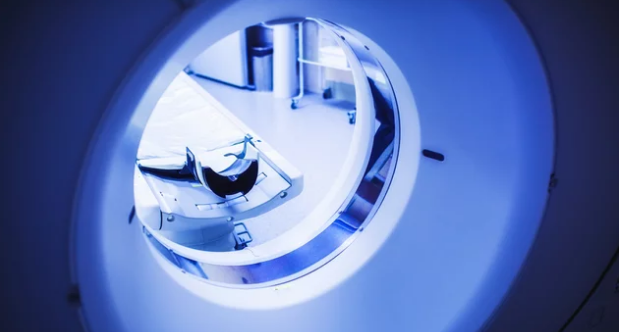MRI (Magnetic Resonance Imaging) has become a cornerstone of modern diagnostics, offering unparalleled insights into the body’s internal structures without invasive procedures. But while MRI scanners generate rich and detailed datasets, the ability to fully analyze and interpret these images often depends on specialized software.
Many commercial platforms offer robust features, but they can also be cost-prohibitive and locked behind vendor-specific ecosystems. Thankfully, a range of open-source MRI visualization tools exists, offering flexibility, customization, and affordability—making them invaluable for research, education, and even certain clinical workflows.
In this article, we’ll explore the top open-source MRI visualization software you should know about, their capabilities, and where they shine.
Why Open-Source for MRI Visualization?
Open-source tools provide several advantages over their proprietary counterparts:
- Cost-Effectiveness – No license fees, making them ideal for research institutions and universities.
- Customizability – Users can tweak and extend functionalities through plugins or source code modifications.
- Transparency – Open algorithms allow for peer review and validation, which is critical in scientific research.
- Community Support – Active communities contribute updates, bug fixes, and new features.
1. 3D Slicer
Best for: Research, education, and advanced image analysis
Overview:
3D Slicer is arguably the most recognized open-source medical imaging platform. It supports a wide range of imaging modalities, including MRI, and offers powerful tools for 3D reconstruction, segmentation, and quantitative analysis.
Key Features:
- Multi-platform support (Windows, Mac, Linux)
- Advanced 3D visualization and volume rendering
- Extensive segmentation and measurement tools
- Plugin system for customization
- Strong research community and documentation
Strengths:
Highly customizable and perfect for complex research workflows.
Limitations:
Steeper learning curve compared to basic DICOM viewers.
2. Horos
Best for: Mac users needing a free OsiriX alternative
Overview:
Horos is an open-source medical image viewer based on OsiriX, tailored for macOS users. It’s intuitive, feature-rich, and supports a wide range of imaging formats, including DICOM MRI data.
Key Features:
- Native macOS integration
- 2D, 3D, and MPR (multi-planar reconstruction) views
- Measurement and annotation tools
- Plugin support for extended functionality
Strengths:
Smooth performance and clean interface for Apple users.
Limitations:
Mac-only and slightly less powerful for advanced quantitative tasks compared to 3D Slicer.
3. Weasis
Best for: Hospitals and PACS integration
Overview:
Weasis is an open-source DICOM viewer often used in hospital environments. It can connect directly to PACS servers, making it suitable for clinical use where MRI data needs to be accessed quickly and securely.
Key Features:
- Multi-platform support
- PACS integration and DICOM query/retrieve
- 2D and 3D image viewing
- Annotation and measurement tools
Strengths:
Ideal for institutions wanting a free viewer integrated into their workflow.
Limitations:
Not as feature-rich for advanced research as 3D Slicer.
4. ITK-SNAP
Best for: Semi-automatic segmentation and anatomical labeling
Overview:
ITK-SNAP specializes in segmentation of MRI and other medical images. It’s widely used in neuroimaging and research projects where precise anatomical labeling is crucial.
Key Features:
- Semi-automatic segmentation with active contour methods
- 3D navigation and visualization
- Multi-platform support
- Compatible with various medical imaging formats
Strengths:
Outstanding for segmenting complex anatomical structures.
Limitations:
Focused on segmentation; not a full diagnostic viewing platform.
5. Mango (Multi-Image Analysis GUI)
Best for: Neuroimaging research and multi-modal datasets
Overview:
Mango is a lightweight but powerful medical image viewer developed by the Research Imaging Institute at the University of Texas Health Science Center. It’s especially popular for neuroimaging MRI studies.
Key Features:
- Cross-platform compatibility
- ROI (Region of Interest) analysis
- Supports overlays and multiple image formats
- Easy export of statistical results
Strengths:
Fast, stable, and excellent for brain research.
Limitations:
Interface feels dated compared to modern tools.
Choosing the Right Open-Source MRI Tool
Your choice depends largely on your goal and environment:
- For advanced 3D modeling & research: 3D Slicer
- For quick, Mac-based viewing: Horos
- For hospital workflows: Weasis
- For segmentation-heavy projects: ITK-SNAP
- For neuroimaging analysis: Mango
The Future of Open-Source MRI Visualization
Open-source medical imaging software is evolving quickly, with trends including:
- AI Integration – Deep learning models for automated detection and segmentation.
- Cloud-Based Access – Collaborative MRI analysis without heavy local hardware.
- VR/AR Visualization – Immersive interpretation of scans for surgery planning and education.
As AI and cloud technologies merge with open-source innovation, expect even more powerful, flexible, and accessible MRI visualization solutions in the near future.
Also Read :
